Hello everyone and welcome back to another blog post!
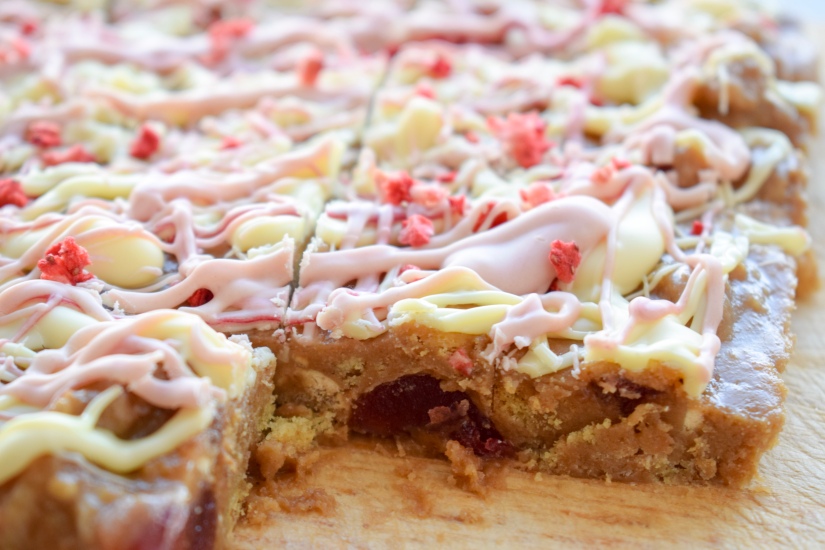
The recipe this time is super easy and doesn’t even require any baking! It’s probably one of my favourite things I’ve baked so far!

White chocolate, glazed cherries, digestive biscuits, Maltesers and golden syrup… so many good things in one bake (well, no-bake)! As always this recipe using only ingredients using sustainable palm oil. You have no idea how happy I was when I found out that Milka and Maltesers both use sustainable palm oil!

So the animal that inspired this bake is the red ruffed lemur (yes, this bake was originally meant to turn out more red than pink…)! Red ruffed lemurs are a critically endangered species from Madagascar and are one of the fluffiest animals you’ll ever see!
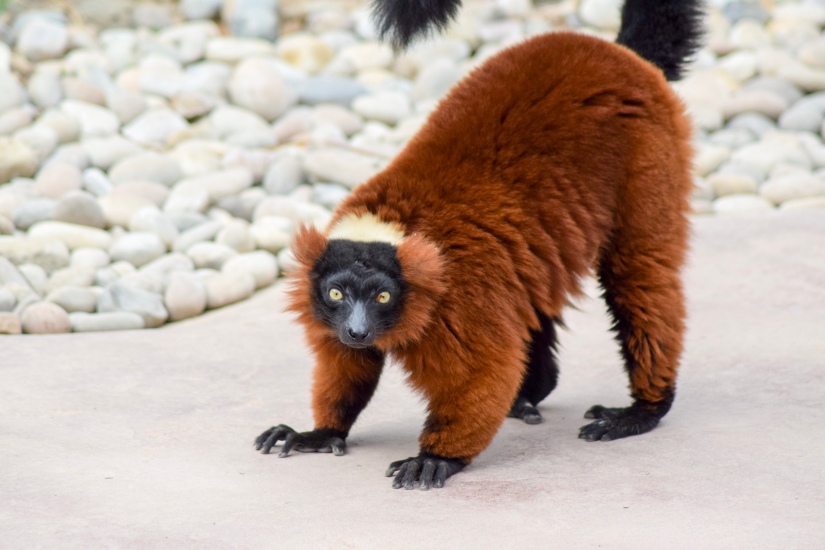
But more on them later, first up is my red ruffed tiffin recipe!
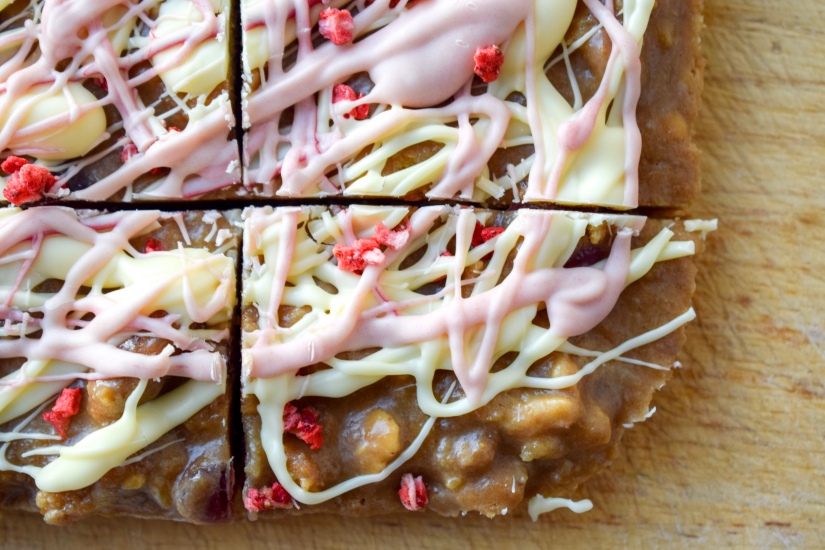
Recipe:
Ingredients:
- 130g butter
- 50g (2 1/2 tbsp) golden syrup
- 300g white chocolate
- 220g broken digestives
- 100g crushed maltesers
- 100g glazed cherries
- Freeze dried strawberries (for decoration)
- Red food colouring
Equipment:
- Large saucepan
- Cling film
- Baking tray
Method:
- Melt the butter and golden syrup together in a large saucepan on a low heat.
- Stir in 100g of the chocolate, until melted.
- Take the saucepan off the heat. Add the digestives, maltesers and cherries, stir well.
- Line the baking tray with cling film and press in the tiffin mixture. Leave to cool.
- While the mixture is cooling (it doesn’t need to cool completely), melt the rest of the white chocolate in two separate bowls (100g in each) in the microwave in 15 second bursts, stirring between each one so the chocolate doesn’t burn.
- Add a few drops of food colouring to one of the bowls and stir.
- Drizzle the chocolate over the tiffin. (I did the normal white chocolate first and then the dyed white chocolate on top.)
- Sprinkle on the freeze dried strawberries.
- Leave in the fridge until it is completely cool.
- Take it out of the baking tray, cut into pieces and enjoy!
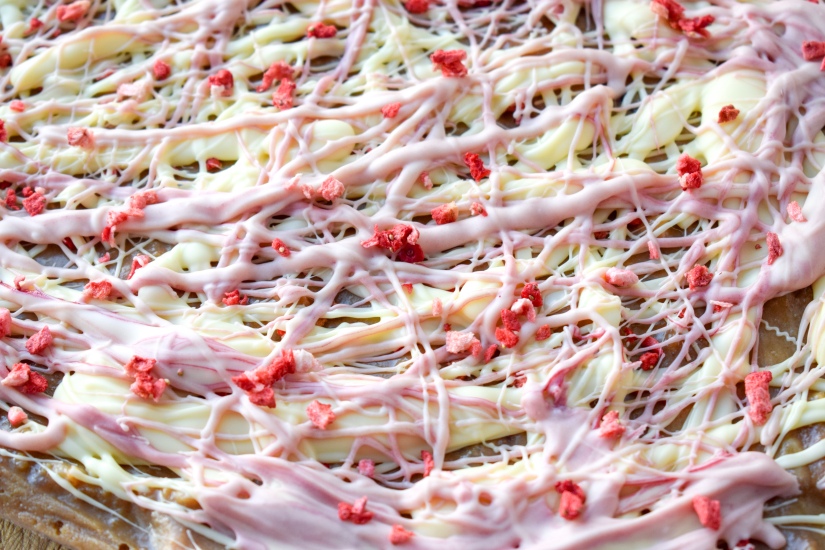
Now onto the animal that inspired the red ruffed tiffin, the red ruffed lemur!
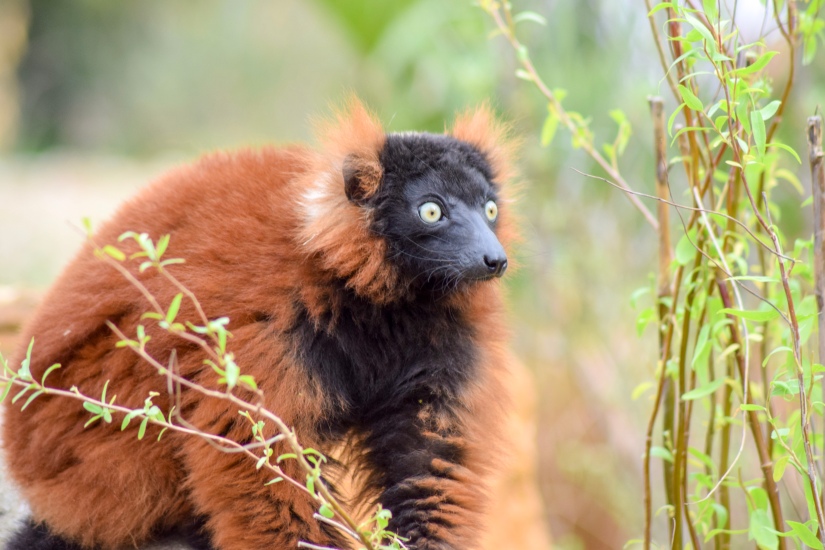
Red ruffed lemur – Varecia rubra
Red ruffed lemurs are a critically endangered primate species found in Madagascar, like all other lemur species. They are one of the two species of ruffed lemur, the other being the black and white ruffed lemur, which can be found in the same area however the two species are separated by a river. They are now so rare that they are only found in the forests of the Masoala Peninsula in north east Madagascar. Their population is unknown but it is declining. Deforestation through logging of large fruit trees that they live in and hunting/trapping for food are the main threats to this species. In order to try and save the species a 840 square-mile national park was opened (Masoala National Park) in March 1997 and is Madagascar’s largest protected area.
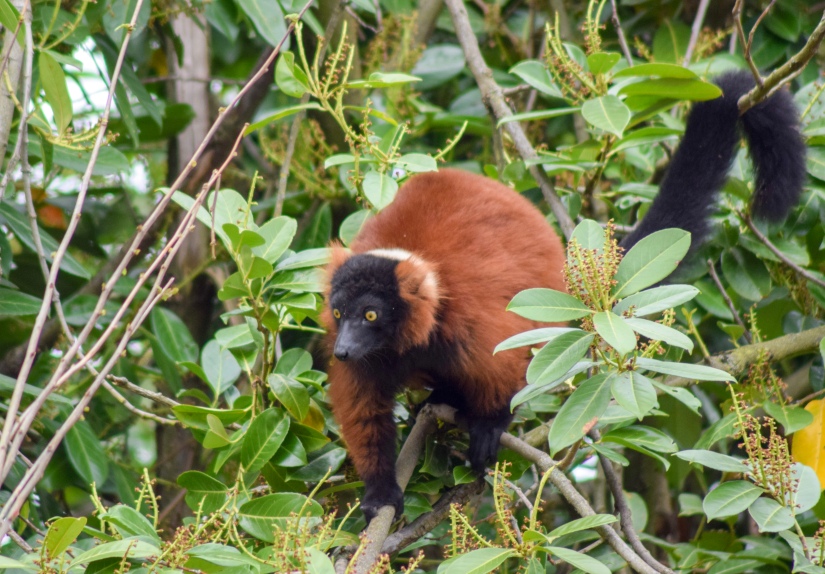
Red ruffed lemurs are one of the largest primates in Madagascar with a body length of around 53cm and a tail length of up to 60cm. They weigh around 3.3-3.6 kg and the females are slightly larger than the males. They’re covered in a soft, thick, red fur which is perfect for living in a rainforest, which can sometimes be wet and chilly. Their tail is long, fluffy and black with a white-ish ring at the base. They also have a white patch on their head and have black fur covering their stomach, head, feet and the inside of their legs.

These lemurs are arboreal, meaning they live mostly in the trees and are hardly ever seen on the ground. Red ruffed lemurs are diurnal, so although they are active for the whole day, they are most active first thing in the morning and in the early evening. They are a timid and curious animal that usually live in small groups of up to 6 individuals. However during the wet season, when food is plentiful, small groups will often join together forming one large group of as many as 30 individuals. These groups are matriarchal, so the females are the ones in charge. Grooming is an important part of group life and they even have a special “tooth comb” which is made up of 6 teeth that are close together. Another important characterisation of the red ruffed lemur is their loud vocalisations and they are in fact one of the most vocal primates. They use these calls for communicating with one another whilst foraging for food, to warn off intruders and to alert group members about any predators, such as boa constrictors, hawks, eagles and fossa.
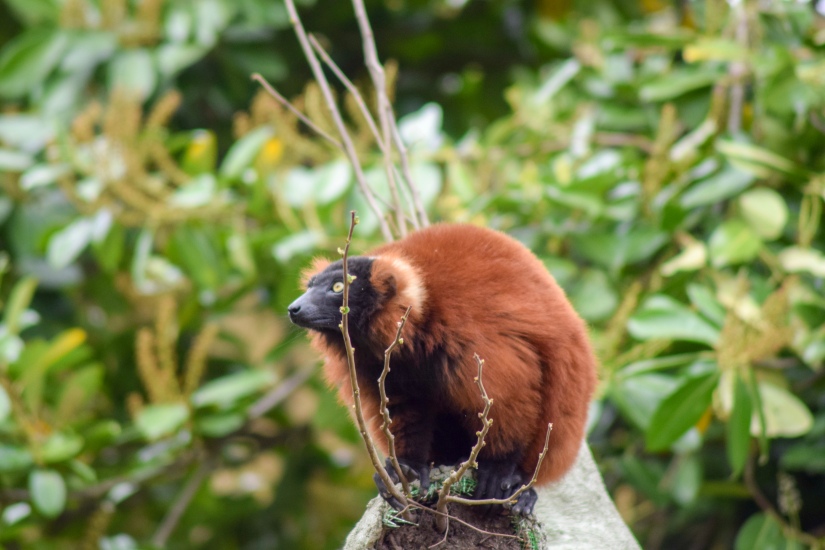
When it comes to the red ruffed lemur’s diet they mainly eat fruit as well as nuts, nectar and, during the dry season, leaves. Their favourite food are figs and have even been known to fight over them! They tend to forage for food separately rather than in a large group, which is unusual when compared to other diurnal lemurs. Red ruffed lemurs have a long snout which they use to feed on nectar by sticking their long nose into flowers. This covers their nose in pollen which will then be passed onto other flowers. This makes this species an important pollinator for some of Madagascar’s flowers. In fact a large population of red ruffed lemurs is seen as a sign of a healthy forest.
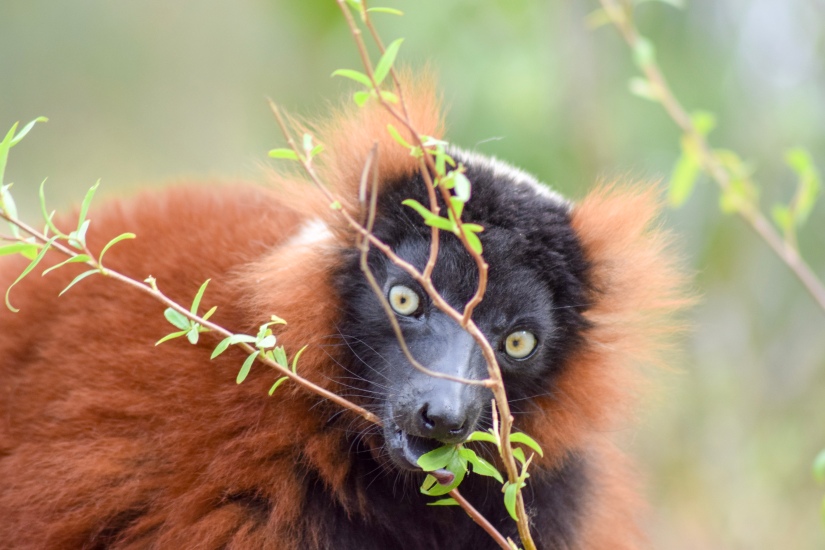
Breeding season for the red ruffed lemurs is between May and July, meaning that young are born during the wet season, when the food is more readily available, (September – October) after a 102 day gestation period. It’s a relatively short gestation period compared to other primates and because of this the babies are born less developed than usual. This means that they are unable to cling onto their mothers such as other primate species. So, unusually, females give birth in a nest that is 10-20 metres above the ground. She will have up to 6 infants who will stay in the nest for around 7 weeks and are left alone whilst the mother leaves to find food. As a result of this 65% of young don’t make it past 3 months of age due to predators or falls. After 4 months they are weaned and start to take care of themselves.
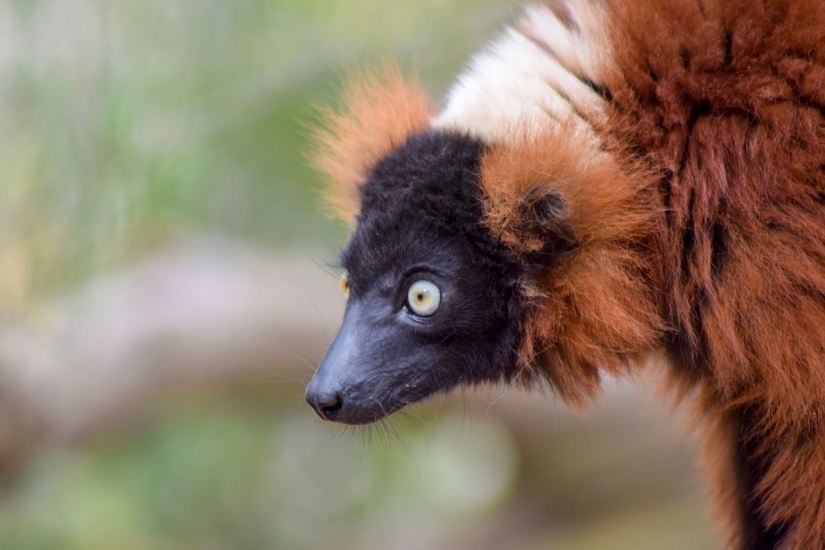
Thank you for reading and I hope you enjoyed learning all about red ruffed lemurs! If you decide to have a go at baking some red ruffed tiffin yourself then I’d love to see! Be sure to upload your bake onto instagram and tag me (@endangeredbakes) or use the hashtag #endangeredbakes! Also feel free to share this blog post, let’s spread the word about this amazing species and raise awareness for wildlife conservation!

